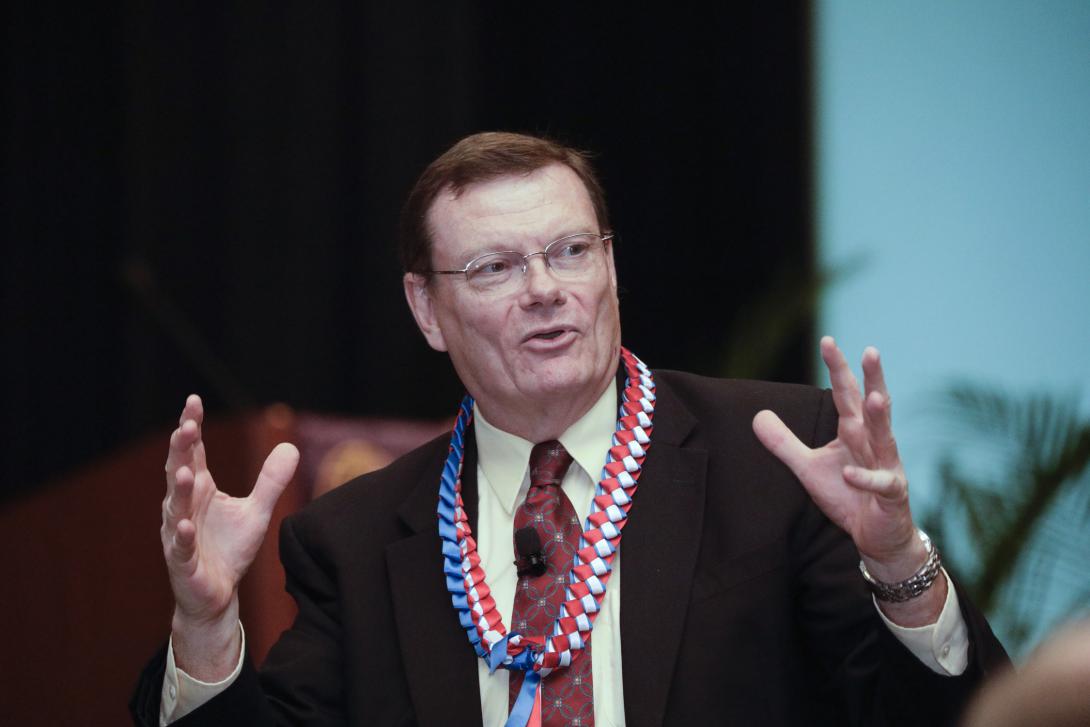Cyber Maximizes Combat Power
Synchronizing cyber with other domains—air, land, sea and space—is still a challenge, but the situation is improving, Lt. Col. Mark Esslinger, USAF, U.S. Pacific Command Joint Cyber Center, asserted during the AFCEA TechNet Asia-Pacific conference November 15-17 in Honolulu.
Col. Esslinger served on a panel of cyber experts. Panelists agreed that the authorities to conduct cyber operations—along with policies, doctrines, tactics, techniques and procedures—still need to be defined. “The cyber mission force is still maturing, and the combatant commands are learning to integrate their capabilities,” Col. Esslinger offered.
Col. Joseph Matos, USMC, Marine Corps Forces, Pacific, questioned whether granting authority to make operational decisions will flow down to battalions or even Marine expeditionary units or brigade combat teams. Lt. Col. David David, USA, Special Operations Command Pacific, explained that any type of operation conducted in a foreign country requires input from various people and organizations, potentially including officials of the foreign country, the U.S. Embassy and the State Department. “If you’re thinking of doing anything in somebody else’s country, whether it’s offensive cyber operations or flying a helicopter, there are a lot of things to consider,” Col. David said.
The cyber operators agreed that training in the cyber realm poses a major challenge. Col. Erik Little, USA, U.S. Army Pacific, said his background is in the space community, although he is now working in the offensive cyber domain. His cyber training consisted of a 40-hour online course he took on his own and three cyber electives. “In the space community, we really don’t have any formal training program on the cyber side,” he stated.
Meanwhile, Terry Halvorsen, Defense Department chief information officer, suggested that cracking down too severely on the much-feared insider threat can be detrimental. He said the United States has a culture of freedom in which people do not believe they are being watched all the time. That, he argued, “powers our work force and … makes this country very different from any other place in the world.”
At the same time, Halvorsen promoted more severe punishment for reckless network behavior. He pointed out that service members who handle weapons carelessly face disciplinary action. “Our policies now for electronic negligence mirror, where they should, those of weapons policy that say if you’ve been trained and you make a mistake, there are consequences,” Halvorsen said.
While the U.S. military faces challenges and threats, it is unlikely to go to war with a major adversary, such as Russia, China, North Korea or Iran, suggested Rear Adm. Phillip Sawyer, USN, deputy commander, U.S. Pacific Fleet. “There are none of those state actors out there who want to go to war with the United States—not a single one of them,” Adm. Sawyer said, adding that the likelihood is “not zero, but it’s very, very low.”
The conference also featured a team of communications officers from the Asia-Pacific region that provided a wish list of technologies and capabilities. The panel included Rear Adm. Kathleen Creighton, director of U.S. Pacific Command’s Command, Control, Communications and Cyber Directorate; Col. Joseph Delaney, USMC, commander of the Defense Information Systems Agency’s Pacific Field Command; Ruth Youngs Lew, director for Communications and Information Systems and chief information officer, Pacific Fleet; Brig. Gen. Larry Thoms, USA, commander, 311th Signal Command; and Col. Matos.
The wish list included advanced identity management; next-generation-derived credentials; spectrum management tools; low probability of intercept or detection technologies; and next-generation satellite communications. Col. Matos added that sometimes the military simply needs ideas for better integrating or using the technologies it already owns. “Instead of looking for the next new toy we can throw out there, sometimes there are technologies and capacities we have already in our inventory. Sometimes it’s about how we integrate what we do have,” he said.
For full event coverage, including videos, photos and presentations, go to url.afcea.org/TNAP16Archive





Comments